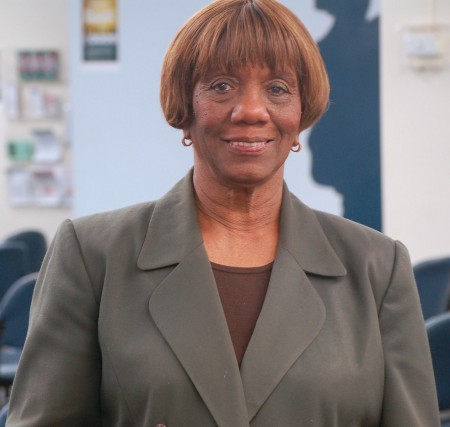How SDC Helps Seniors Maintain Independence
Last year, its program made 12,009 visits to 280 clients.

Mary Listenbee (right), 89, has been a senior companion for Lela Malone, 81, for three years. Photo by Edgar Mendez.
For more than three years, Mary Listenbee, 89, has been the second pair of eyes, arms, legs and ears for Lela Malone, 81.
“If I start something she’ll finish it for me,” said Malone, a client of the Social Development Commission’s (SDC)Senior Companion Program.
The free program matches senior participants with a companion, also a senior, who provides daytime home visits once or twice a week for a few hours at a time. During the visits, the companions help out with day-to-day tasks such as cooking or eating meals, putting together puzzles, going to medical appointments, reading or housework.
While helping the seniors perform tasks that have become challenges, the companions also monitor their health and wellness. In addition, they provide respite care, giving their clients’ caregivers — often family members — a few hours of relief.

Mattie Payne, senior companion program manager at SDC, said the program often allows seniors to stay in their homes for a few more years. Photo by Edgar Mendez.
Despite visiting for a limited number of hours per week, the companions have a huge impact on the lives of clients by helping them extend the time they can stay in their own homes rather than moving to an assisted living or nursing home facility, said Mattie Payne, senior companion program manager at SDC.
“That helps them physically and mentally because they’re more relaxed at home. They know where things are and just feel better (sitting) on their own furniture and among their own memories,” Payne said.
Last year 64 senior companions from SDC made 12,009 visits to 280 clients.
Listenbee typically helps Malone do her physical therapy, takes her shopping and answer the phone to ward off unwanted calls from telemarketers and others, among other tasks. And while Malone said she appreciates all that, she most enjoys the conversations and bond they share.
“She’s like my sister,” said Malone, who practiced for decades as an education paraprofessional on Milwaukee’s North Side. The women spend much of their time together sharing memories about growing up in the south and talking about their late husbands or other family members.
“Socialization and emotional support are key components of the program,” Payne said.
The program, which began in 1974, is one of several services offered at SDC that cater to seniors. They include a Prescription Advocacy and Referral Service, which helps seniors pay for prescriptions, and benefits assistance counseling, which helps them determine whether they are eligible for federal programs such as Medicare or state programs such as FoodShare. SDC recently lost a grant to provide energy assistance services.
Senior companions garner some financial benefits, including a small tax-free stipend that doesn’t affect their Social Security benefit. More importantly, the program helps low-income seniors feel useful, according to Payne.
Senior companions must be 55 or older, have an income no more than $23,540 for individuals and pass a background check and physical. Companions are provided 40 hours of free service training in addition to supplemental trainings and recognition activities held every few months.
“Some seniors who begin the program as companions end up needing companions of their own,” Payne said.
Malone lives with her adult daughter, who works full time and attends to her mother in the evenings. With Listenbee and her daughter both helping to care for her, Malone said she’s confident she won’t be living anywhere else, anytime soon.
“I don’t want to go to no nursing home. I want to stay right here,” she said, smiling.
This story was originally published by Milwaukee Neighborhood News Service, where you can find other stories reporting on fifteen city neighborhoods in Milwaukee.




















